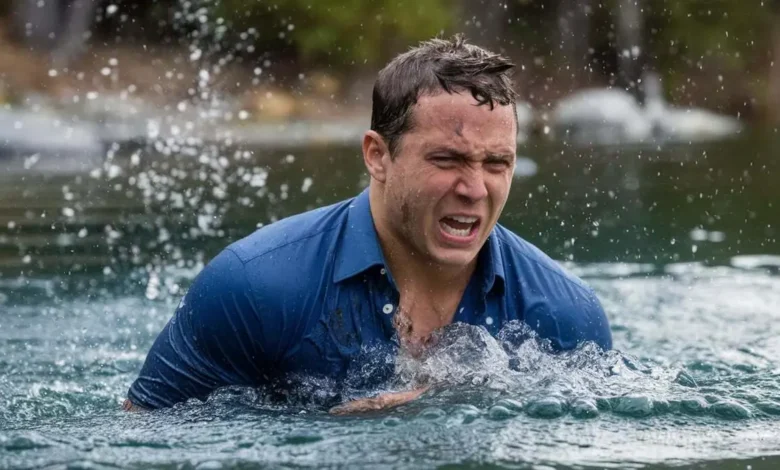Callahan Walker Drowning: A Comprehensive Look at the Tragedy and Its Impacts

The incident surrounding the drowning of Callahan Walker Drowning is one of those heartbreaking events that leaves a mark on communities and sparks deeper conversations about safety, awareness, and responsibility. Tragedies like these remind us of the fragility of life and the importance of understanding the circumstances that lead to such devastating outcomes.
In this article, we will delve into Callahan Walker Drowning story, explore the factors involved in drowning cases, discuss the emotional aftermath, and examine what can be done to prevent similar occurrences in the future. By understanding the nuances, we aim to bring awareness to a crucial topic that deserves our attention.
The Story of Callahan Walker Drowning: What Happened?
The story of Callahan Walker Drowning is both tragic and sobering. It serves as a painful reminder of how quickly life can change. On the fateful day of the incident, Callahan participated in what seemed like a routine activity. The details highlight how seemingly safe environments can become hazardous, whether a trip to a lake, a beach outing, or swimming in a pool.
Drowning incidents are often silent and swift. Many people assume there will be loud splashing or cries for help, but the reality is different. For Callahan, the events likely unfolded in a matter of moments. Witness accounts, if any, often struggle to piece together what exactly went wrong. Whether due to an unseen current, a sudden slip, or an unnoticed medical condition, Callahan Walker Drowning loss emphasizes how vital it is to remain vigilant near water bodies.
This incident highlights personal loss and brings attention to larger systemic issues. It serves as a wake-up call for communities to prioritize water safety education, equip swimming areas with proper safety measures, and ensure everyone understands the risks involved in aquatic activities.
The Impact of the Tragedy on Family and Community

The drowning of Callahan Walker Drowning left a void that words can barely express. The emotional toll on the family is unimaginable, and their grief reverberates through the wider community. When a young life is lost, the pain transcends individual households, impacting neighbors, friends, and even strangers who hear the story.
Families often face immense guilt, wondering what could have been done differently. It’s a natural yet overwhelming part of the grieving process. Communities, too, must reflect on whether the incident could have been prevented. Are public swimming areas equipped with lifeguards? Is there enough signage about potential dangers? These questions often arise after tragedies, but the answers can lead to proactive measures that save lives in the future.
The loss also highlights the importance of collective healing. Communities come together to support the bereaved family, whether through organizing vigils, offering financial assistance, or simply being present to provide emotional support. Such solidarity is crucial in helping those affected navigate their pain while fostering a culture of care and awareness.
Understanding the Factors Behind Drowning Incidents
Drowning is often misunderstood, and the factors that contribute to such tragedies are multifaceted. For Callahan Walker Drowning, as with many drowning victims, it’s essential to examine the contributing elements to learn valuable lessons.
One significant factor is a lack of awareness about water safety. Many individuals, particularly children, may not fully grasp the risks associated with water bodies. Even adults can underestimate the power of currents, the sudden drop-offs in lakes, or the slippery edges of pools. Another critical issue is the overconfidence some swimmers may have, assuming they can handle any situation, only to find themselves overwhelmed.
Environmental factors also play a role. Unpredictable weather changes, strong undercurrents, or hidden obstacles beneath the surface can turn a seemingly safe waterbody into a danger zone. In some cases, medical conditions like fainting or seizures while swimming can result in accidental drownings, making it even more important to be vigilant.
The Silent Nature of Drowning: Why It’s Hard to Detect
One of the most harrowing aspects of drowning is how silent it often is. Contrary to popular belief, it’s not always accompanied by frantic splashing or cries for help. Victims typically slip below the surface quietly, unable to call for assistance because they are struggling to breathe. This lack of overt signals makes it challenging for bystanders to notice until it’s too late.
For Callahan Walker Drowning, this silent danger played a critical role. Detecting someone in distress is vital, whether in a crowded or secluded area. Understanding the signs of drowning—such as a person’s inability to keep their head above water or unusual body movements—can be life-saving. Public education campaigns focusing on these subtle signs could make a significant difference in reducing future tragedies.
Emotional Recovery and the Path Forward
Recovering from the loss of a loved one to drowning is a complex and deeply personal journey. For the family of Callahan Walker Drowning coping with such an unexpected and preventable loss requires immense strength. Waves of sadness and anger mark the grieving process and, eventually, a search for meaning and acceptance.
Communities also play a crucial role in the healing process. Vigils, memorials, and awareness campaigns honor the departed’s memory and bring people together to ensure that the loss was not in vain. Such events often lead to initiatives to improve water safety measures, creating a legacy of prevention and care.
Looking forward, it’s essential to channel the grief into action. By advocating for stronger safety protocols, investing in swimming lessons, and spreading awareness about the risks of drowning, we can work towards a future where tragedies like Callahan Walker Drowning are less frequent.
Preventing Drowning: Lessons and Solutions
Prevention is the most critical aspect of addressing drowning incidents. For Callahan Walker Drowning and countless others, individual awareness and systemic change are necessary to make aquatic environments safer.
One of the most effective measures is education. Teaching children and adults alike about the dangers of water, proper swimming techniques, and how to identify risks can significantly reduce the likelihood of accidents. Schools and community centers can play a vital role by incorporating water safety programs into their curriculum.
The presence of lifeguards and safety equipment is another crucial factor. Public swimming areas should be adequately staffed, and life-saving devices like floatation rings or throw bags should be readily accessible. Additionally, clear signage warning of potential dangers—such as strong currents or sudden drop-offs—can prevent many accidents.
Honoring Callahan Walker’s Memory Through Awareness
Every life lost to drowning is a tragedy, but each tragedy can catalyze change. For Callahan Walker Drowning, the best way to honor their memory is by ensuring that others do not suffer a similar fate. We can create safer environments for everyone through collective efforts to raise awareness, improve safety measures, and foster a culture of vigilance.
The story of Callahan Walker Drowning reminds us of life’s fragility and the importance of taking proactive steps to protect it. By learning from this tragedy and committing to prevention, we can turn pain into purpose and build a legacy of safety and care.





